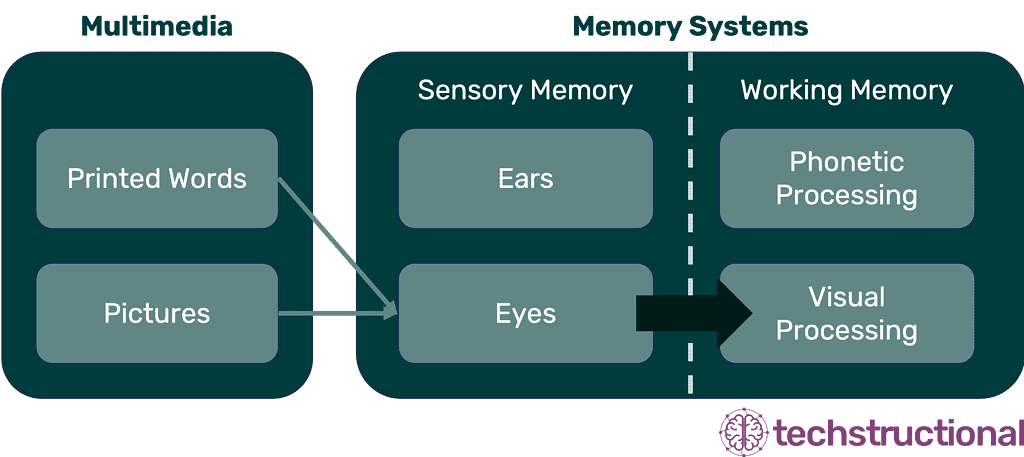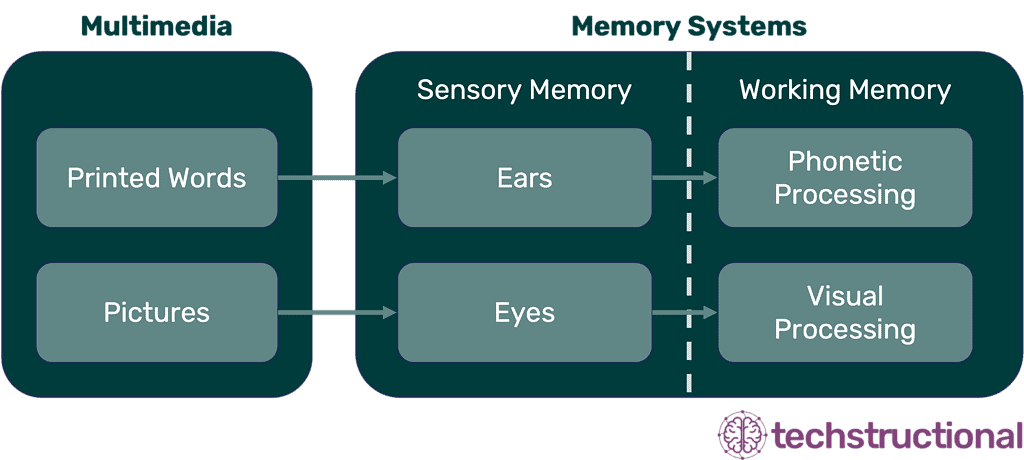To hear or not to hear (your eLearning), that is the question.
With the rise of, well, Rise courses, there has also been a decrease in narration for eLearning. But is that a good thing?
Some may say it’s a good thing, while others will say otherwise. There are definitely pros and cons to having an eLearning voiceover vs. making people read it themselves.
Then there’s the entirely different yet closely related issue of synthesized voiceovers. That’s a whole other conversation, though, so we’ll keep it simple with narration of any type for eLearning. I won’t promise not to mention AI voiceover again, though.
Our ultimate question: Is narration a beneficial addition to online courses, or does it detract from the learning experience?
The answer can vary greatly depending on the type of course, what’s being learned, etc. Then there’s the question of the tool. There are tools like Articulate Rise, which lack narration capabilities (unless you’re embedding a podcast), and then there’s Articulate Storyline, which easily accommodates it and seems to be built for it.
Videos are for narration, and courses are for reading, right?
Wrong.
It’s also not that simple.
It’s crucial to weigh the pros and cons of incorporating narration into eLearning. You could argue either way, but the ultimate conclusion is that narration adds tremendous value. Also, some studies back up the use of narration in eLearning.
The science promoting the use of audio narration in eLearning is strong, but the cons must still be considered.
Unfortunately, most people hate to read. That or they just hate reading learning content that can be a bit dry. I like reading a good book, but when you put an eLearning white paper in front of me, it’ll likely sit there for a few months.
Before we get into the details, let me paint a nice picture of what it’s like when a course has narration.
Imagine a complex subject. As you navigate through the content, a soothing or happy voice guides you, effortlessly explaining concepts and providing real-life examples.
A professional voice adds a human touch, captivating your attention and easing your understanding of the material. This compelling scenario highlights one of the key benefits of eLearning narration – its ability to engage on a deeper level.
However, as with anything, there are drawbacks to consider. Imagine that an eLearning narrator is monotone, boring, and robotic, making you want to put in earplugs. Then there’s the issue with AI voiceover, which even the best of them sounds mostly pretty bad.
Narration by a real human adds more humanity to eLearning and typically makes it easier to learn from.
When we’re on a mission to create the best online course possible, striking the right balance between narration and none becomes paramount to ensure the most effective course.
So, should eLearning courses have a voice?
We’re here to answer that question and hopefully make it a bit easier for you to make that decision. We’ll dive into the pros and cons of incorporating narration in eLearning.
By the end, you’ll better understand how narration can enhance or hinder the learning experience. This knowledge will empower you to make informed decisions when designing and implementing your own online courses.
Before jumping into the pros and cons, let’s examine some important studies.
The Science for Narration
If you want to learn more about the science of instruction, which can be applied directly to eLearning, definitely read e-Learning and the Science of Instruction by Ruth Colvin Clark and Richard E. Mayer.
The specific place you need to start your reading on this topic is chapter 6 in the 4th edition. It’s all about applying the modality principle. The premise? Present words as audio narration rather than on the screen.
That’s pretty encouraging, but it would be too easy to leave it with no additional information.
…there is considerable evidence that presenting words in audio rather than on-screen text can result in significant learning gains.
(2016). Applying the Modality Principle: present Words as Audio Narration Rather than On-Screen Text. In e-Learning and the Science of Instruction (eds R.C. Clark and R.E. Mayer). https://doi.org/10.1002/9781119239086.ch6
There’s a very clear reason for this, which is summed up in the first section based on research summarized throughout the chapter.
Why is audio narration so powerful?
The advantage is as follows:
…incoming information being split across two separate cognitive channels – words in the auditory channel and picture in the visual channel – rather than concentrating both words (as on-screen text) and pictures in the visual channel.
(2016). Applying the Modality Principle: present Words as Audio Narration Rather than On-Screen Text. In e-Learning and the Science of Instruction (eds R.C. Clark and R.E. Mayer). https://doi.org/10.1002/9781119239086.ch6
Yes, information is more impactful when split between two channels. So, if you have a visual and then some written text, attention must switch back and forth between the two. This is the same reason multitasking doesn’t work.
With audio narration, you can show the visual in the visual channel while explaining the visual in the auditory channel. As long as you don’t also put text on the screen in addition to a graphic, that’s a winning combination.
I also created some visuals from the book. I’m giving direct credit to the book, but they don’t have a version I can use on the internet, so I had to recreate them.

(2016). Applying the Modality Principle: Present words as Audio Narration Rather than On-Screen Text. In e-Learning and the Science of Instruction (eds R.C. Clark and R.E. Mayer). https://doi.org/10.1002/9781119239086.ch6
And then there are balanced channels:

(2016). Applying the Modality Principle: Present words as Audio Narration Rather than On-Screen Text. In e-Learning and the Science of Instruction (eds R.C. Clark and R.E. Mayer). https://doi.org/10.1002/9781119239086.ch6
But there’s more to it than just the science. Let’s look at some real-world pros and cons of using narration in eLearning.
The Pros & Cons of Voice Over In eLearning
Just like with anything, there are pros and cons. The science is definitely on the side of pro narration, but the darn real world tends to get in the way. Let’s look at some of those real-world pros and cons, which are real and powerful.
The Pros
The science behind using audio narration for eLearning is that it reduces employees’ cognitive load and makes it easier to learn content.
Our expertise is technical instruction, which often involves using software, walking employees through its use, and explaining important information about using it as it applies to their jobs. This type of instruction is heavily visual, which means people simply can’t process the visuals and read an explanation effectively.
What does that mean for technical instruction? Audio narration is a must in nearly all cases. There’s no way to get around that since learning software is such a visual process. Of course, you always want to make the audio available in captions or notes of the eLearning, too.
These are some of the pros of audio narration in eLearning beyond the science.
More Engaging
If you pull up a course and it’s a wall of text, that’s not very inviting. On the other hand, visuals with a friendly narrator explaining information are a lot more approachable. Unless the topic and narrator are absolutely beyond boring, the narration will help make the content more engaging.
Human
Humanity is more engaging than computers or technology. Hearing a real person (not an AI voice, please) walk you through a complex topic adds humanity to the topic.
Most people would rather have someone explain a topic to them than find it in a book or long document. That’s why video platforms like YouTube and TikTok are so popular. A real human narrator adds humanity to a course.
Accessible
While providing a written version of what’s being spoken is important, audio is generally more accessible than written text. Narration is a helpful way of understanding the content for those who can’t see very well or at all. Paired with closed captions or at least subtitles, audio narration is more accessible than text only, at least from a human perspective.
Increased Comprehension
When we have to read ourselves, we’re more likely to skim and miss important information. Not only that, but many people’s reading comprehension simply isn’t that great. Audio, on the other hand, is a different story.
Audio narration is easier to comprehend as long as there’s audio plus accompanying (but meaningful) visuals. The problem is when it’s just audio and distractions such as email or looking at Facebook come in.
The Cons
While narration offers numerous benefits, it’s also essential to consider its potential drawbacks. Even with science backing the use of narration, even Ruth Clark and Richard Mayer admit it’s not always the best choice.
There’s even a section dedicated to the modality principle’s limitations. Here’s a good quote that illustrates some of those limitations.
…the creation of sound may involve technical demands that the learning environment cannot meet…or may create too much noise in the learning environment.
(2016). Applying the Modality Principle: present Words as Audio Narration Rather than On-Screen Text. In e-Learning and the Science of Instruction (eds R.C. Clark and R.E. Mayer). https://doi.org/10.1002/9781119239086.ch6
That covers some of the cons that we’ll cover. So, let’s take a look at those.
More Noise
Some environments are so noisy and distracting that you cannot use narration in a course. Some manufacturing or warehouse floors are so loud that even with headphones, audio wouldn’t come through. If there’s nowhere else to take a course, the audio narration is useless.
Then there are the safety issues it could present. Nurses must listen for alarms and such; therefore, they can’t plug in headphones and listen to narration. If the expectation is that they take training while on call, then narration is a poor option.
Implemented Poorly
Unfortunately, it’s extremely common for practiced instructional designers and those moonlighting as IDs to implement narration poorly. It completely defeats separating cognitive channels when the spoken words are also displayed on the screen.
If you do that, the audio narration isn’t effective. Not only that, but many subject matter experts may not like it when nothing is moving on the screen and ask for the words to be displayed instead. If you don’t fight against that, the audio narration will be poorly implemented and more of a hindrance than help.
Cost
Audio narration is expensive. You have to write the script and then record it yourself, which takes time, or hire professional voice talent, which costs money. Either way, eLearning voiceovers can be expensive.
Having audio narrations in eLearning can add many expenses. Any updates you make also require additional cost.
Translation
Having separate audio recorded for multiple languages can be cost-prohibitive and too complex. Each language must be translated from the original script, and then a native speaker must record the audio. That’s complex, time-consuming, and expensive.
Time-Consuming
Writing the script and recording it for audio narration takes more time. If any changes are needed, the entire process must start over again. What happens if you can’t get the same narrator? Now you have to redo the entire course again!
For content that changes rapidly, it may not be possible to have audio narration.
No Visuals
The science behind the modality principle and the benefits of audio narrations don’t apply when there are no visuals. If your topic has no visuals that need explaining or that add value, then there’s not always a need for audio narration.
That’s not always the case, though. You can tell a story with audio and have nothing but a still picture, yet it could still add value. But if you find you have only a white screen with audio for two minutes, then that’s not good (but not necessarily bad). Just don’t get pulled into the trap of feeling like you need visuals every second by putting the spoken text on the screen.
More Cons?
Maybe in quantity, but overall, the benefit is still firmly on the pro audio narration side. But is there a way to strike a balance between the two?
Striking the Right Balance: Optimizing Narration in eLearning
To optimize the use of narration in eLearning courses, it’s essential to strike the right balance between audio and other instructional elements. Also, don’t feel like you must have narration on every screen.
It’s perfectly acceptable to alternate as long as it’s not confusing with the expectation that audio will start playing but then doesn’t.
Here are some things to consider to strike the right balance.
- Align narration with performance objectives: Ensure that the narration supports the intended learning outcomes and enhances understanding rather than being a mere add-on.
- Use narration selectively: Identify areas where narration can provide the most value, such as complex concepts or scenarios requiring additional explanation. Just be sure that people know there’s audio on a screen so they can accommodate.
- Provide alternatives: Accommodate those who can’t hear or use the audio by making closed captions available or providing the narration in the notes section of your course.
When deciding whether to use audio narration, you must consider many different factors. These include employee circumstances, available budget, project timing, and more.
Then, sometimes, you are forced to use a specific tool for development. If you’re using Articulate Rise, audio narration is out of the question unless it’s in the style of a podcast. If you’re using Articulate Storyline, you can choose to use narration or not.
Wrap Up
When done well, incorporating narration into eLearning offers significant benefits in terms of engagement, comprehension, creating a human connection, and more. However, it’s nice to consider the cons when deciding whether to use narration.
Yes, even something as beneficial as audio narration won’t be the right choice for every project, company, or employee. There are a myriad of different factors to take into account. That makes it something that has clear benefits but must be weighed intelligently.
By understanding the pros and cons of narration in eLearning and making informed decisions, eLearning can be made to be engaging on a deeper level and maximize your company’s impact.
Our specialty is custom corporate technical training using digital learning solutions, such as custom eLearning development. We tend to use audio narration, mostly because many visuals on the screen must be explained.
If you’d like to discuss your project and whether audio narration is ideal, schedule a free consultation. We’d be happy to help direct you and decide on the best option. We’re also available to help your employees perform better with company technology.
